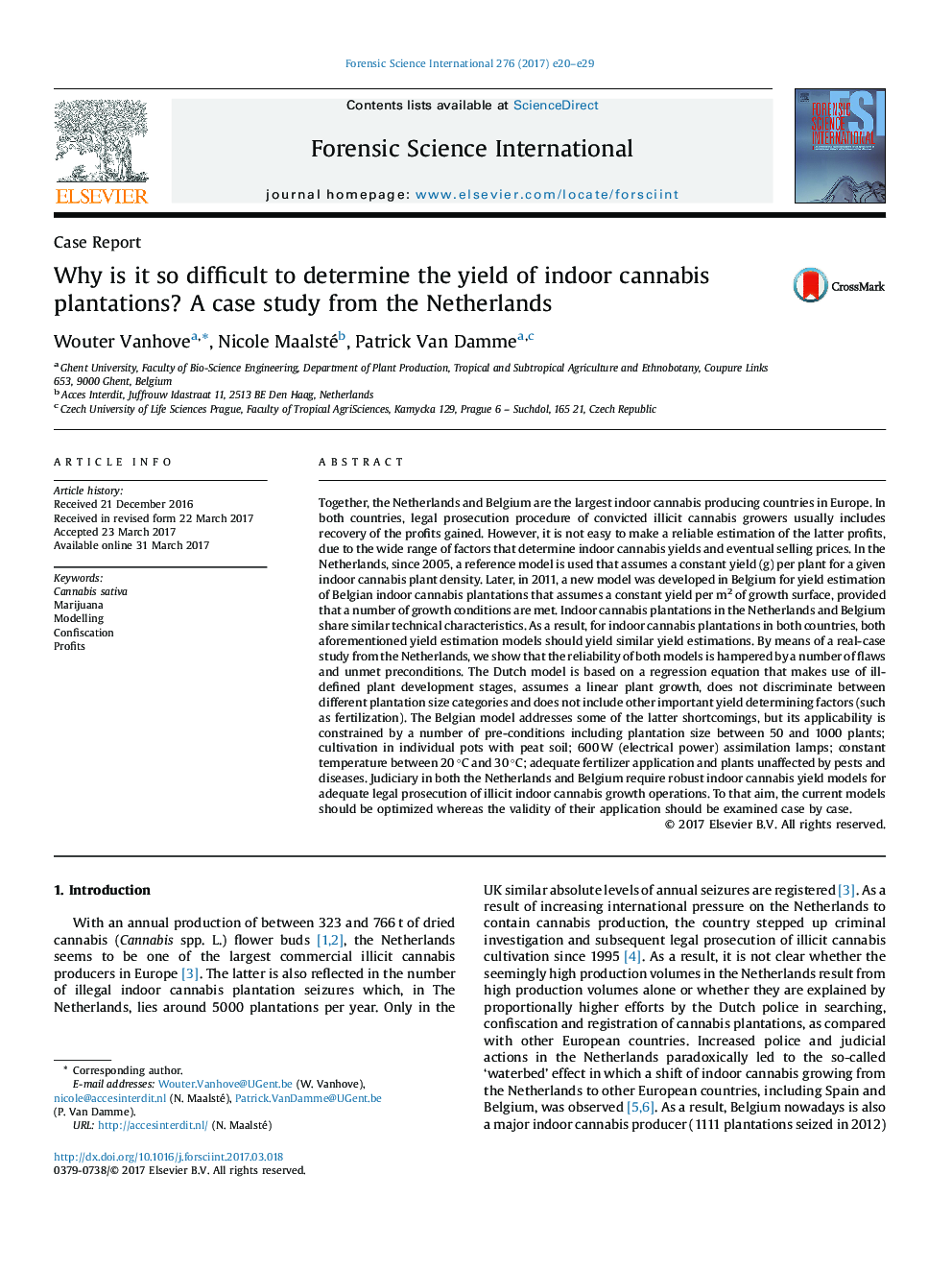| کد مقاله | کد نشریه | سال انتشار | مقاله انگلیسی | نسخه تمام متن |
|---|---|---|---|---|
| 4760312 | 1421974 | 2017 | 10 صفحه PDF | دانلود رایگان |
- Indoor cannabis yield depends on many cultivation and environmental factors.
- Judiciary in Belgium and the Netherlands uses different yield models.
- The Dutch yield model is based on a flawed linear regression of yield.
- Applicability of the Belgian yield model is hampered by a number of pre-conditions.
- Yield models must be optimized by more research.
Together, the Netherlands and Belgium are the largest indoor cannabis producing countries in Europe. In both countries, legal prosecution procedure of convicted illicit cannabis growers usually includes recovery of the profits gained. However, it is not easy to make a reliable estimation of the latter profits, due to the wide range of factors that determine indoor cannabis yields and eventual selling prices. In the Netherlands, since 2005, a reference model is used that assumes a constant yield (g) per plant for a given indoor cannabis plant density. Later, in 2011, a new model was developed in Belgium for yield estimation of Belgian indoor cannabis plantations that assumes a constant yield per m2 of growth surface, provided that a number of growth conditions are met. Indoor cannabis plantations in the Netherlands and Belgium share similar technical characteristics. As a result, for indoor cannabis plantations in both countries, both aforementioned yield estimation models should yield similar yield estimations. By means of a real-case study from the Netherlands, we show that the reliability of both models is hampered by a number of flaws and unmet preconditions. The Dutch model is based on a regression equation that makes use of ill-defined plant development stages, assumes a linear plant growth, does not discriminate between different plantation size categories and does not include other important yield determining factors (such as fertilization). The Belgian model addresses some of the latter shortcomings, but its applicability is constrained by a number of pre-conditions including plantation size between 50 and 1000 plants; cultivation in individual pots with peat soil; 600 W (electrical power) assimilation lamps; constant temperature between 20 °C and 30 °C; adequate fertilizer application and plants unaffected by pests and diseases. Judiciary in both the Netherlands and Belgium require robust indoor cannabis yield models for adequate legal prosecution of illicit indoor cannabis growth operations. To that aim, the current models should be optimized whereas the validity of their application should be examined case by case.
Journal: Forensic Science International - Volume 276, July 2017, Pages e20-e29
